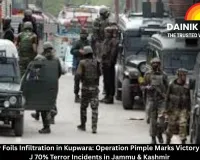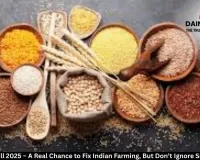How Social Media Fueled the Chaos: The Delhi Air Pollution Protest 2025 and Its Grip on News Consumption
Digital Desk

In the choking haze of Delhi's toxic air, a desperate cry for clean skies at India Gate on November 24, 2025, spiraled into a nightmare of violence and ideology. What began as a genuine Delhi air pollution protest against a severe AQI hovering above 450—levels deemed "hazardous" by environmental watchdogs—quickly devolved into India Gate protest violence. Protesters, masked against the smog, unleashed pepper spray on police, chanted "Madvi Hidma Amar Rahe" slogans honoring the slain Maoist commander, and waved pro-Naxal posters.
Over 23 arrests followed, with authorities probing Maoist infiltration in Delhi's urban underbelly. This Delhi smog protest 2025 wasn't just a clash of bodies; it exposed the double-edged sword of social media in shaping how we consume—and distort—news.
As a smog-choked capital gasped for breath, platforms like X (formerly Twitter), Instagram, and WhatsApp ignited the spark. Hashtags like #DelhiAirPollutionProtest and #ToxicAirDelhi exploded overnight, amassing millions of views. Grainy videos of officers recoiling from chilli spray barrages went viral, shared by activists and armchair revolutionaries alike. But here's the rub: social media's algorithm-fueled frenzy didn't just amplify the Delhi AQI severe crisis; it weaponized it.
Echo chambers formed faster than the winter inversion trapping pollutants, where environmental pleas morphed into Maoist glorification. One viral clip, timestamped at the protest's peak, showed a young demonstrator unfurling a Hidma poster amid chants—racking up 500,000 shares before fact-checkers could blink.
In this digital coliseum, nuance evaporated like morning mist in the sunless smog.
The impact on news consumption? Profoundly polarizing. Traditional media, offered measured reporting: a tragic hijacking of a vital cause by "urban Naxals," as BJP leaders labeled it. Yet on social feeds, outrage binaries reigned supreme.
Left-leaning users decried police brutality in the pepper spray on police melee, framing it as state suppression of eco-justice. Right-wing accounts, meanwhile, screamed "anti-national" infiltration, linking Madvi Hidma slogans to a broader red threat. This isn't passive scrolling; it's active radicalization.
Studies from Pew Research echo this: 64% of adults now get news from social media, where misinformation spreads six times faster than truth. In Delhi's case, unverified claims of "government-orchestrated smog" intertwined with Maoist rhetoric, eroding trust in institutions and fueling street-level distrust.
Don't get me wrong—social media democratized the Delhi air pollution protest 2025, giving voice to the voiceless in a city where 20 million souls battle invisible poison daily. Livestreams captured the raw desperation: children with inhalers, commuters in N95 masks, the acrid burn of stubble fires from Punjab farms.
It mobilized thousands, pressuring policymakers for odd-even schemes and stricter GRAP enforcement. But at what cost? The platform's dopamine drip—likes, retweets, outrage porn—prioritizes spectacle over substance. We consume bite-sized fury, not context: Why Hidma? A Bastar Maoist icon for some, terrorist for others.
How did eco-grief twist into ideological fire? Social media skips the homework, serving us a filtered reality that hardens divides.
In my view, this toxic brew demands detox. Regulate algorithms to favor verified sources, not viral venom. Educate users on media literacy amid the haze.
Until then, events like the India Gate protest violence remind us: Social media isn't just changing how we consume news—it's choking the truth, one polluted post at a time. Delhi's skies may clear with monsoons, but our information ecosystem? That's a storm brewing.






.jpg)




